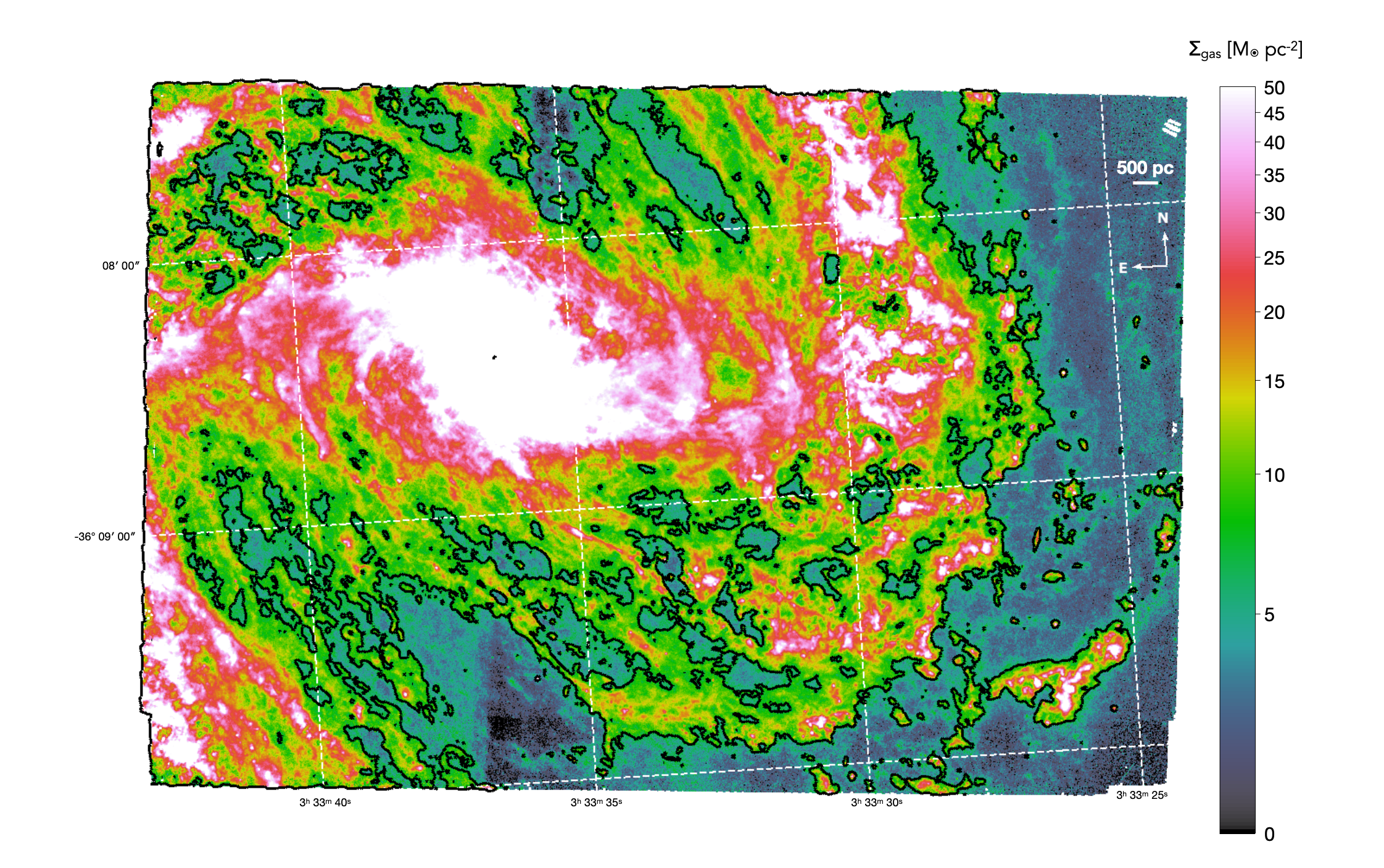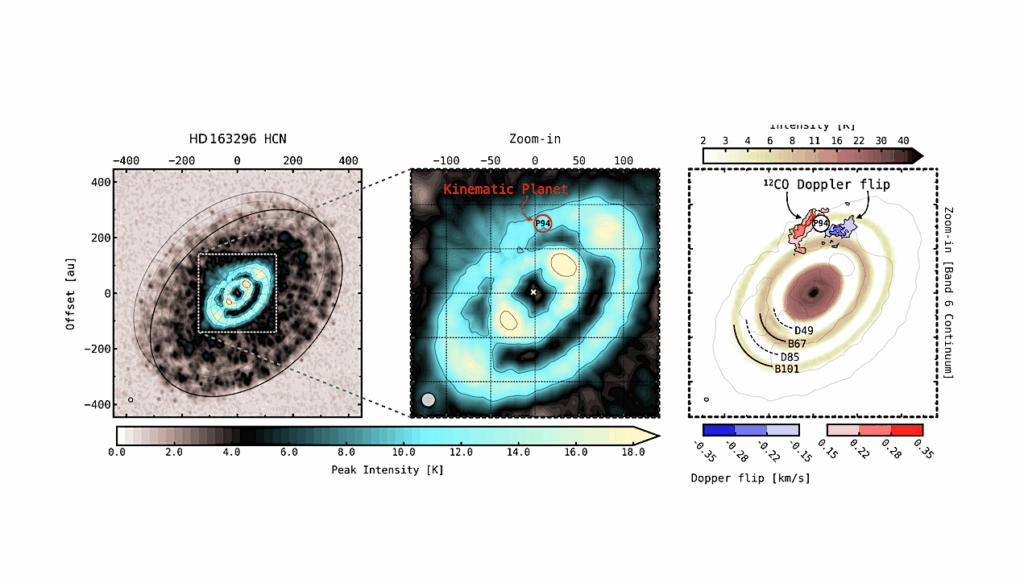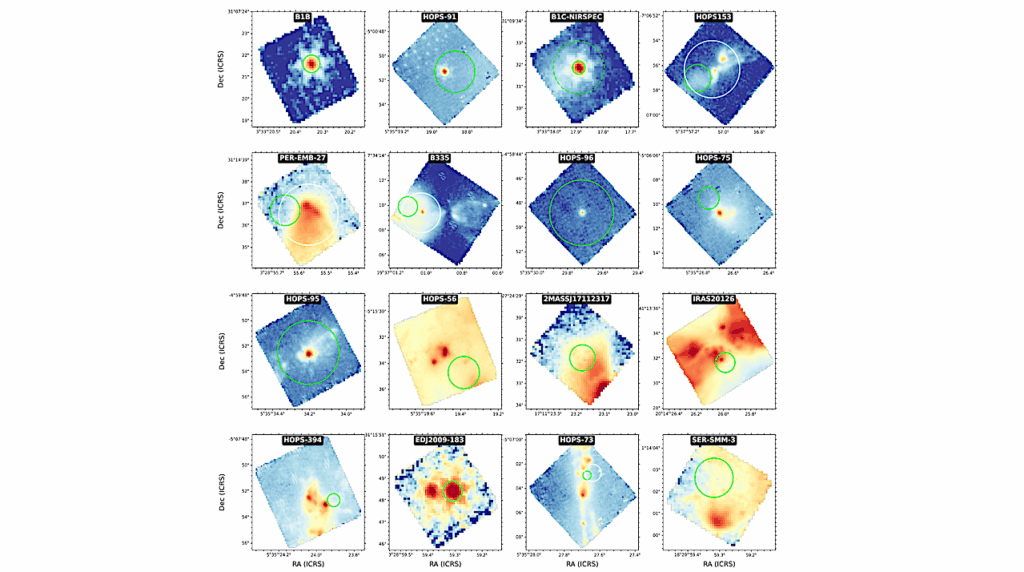PHANGS-JWST First Results: Tracing the Diffuse ISM with JWST Imaging of Polycyclic Aromatic Hydrocarbon Emission in Nearby Galaxies

JWST observations of polycyclic aromatic hydrocarbon (PAH) emission provide some of the deepest and highest resolution views of the cold interstellar medium (ISM) in nearby galaxies.
If PAHs are well mixed with the atomic and molecular gas and illuminated by the average diffuse interstellar radiation field, PAH emission may provide an approximately linear, high resolution, high sensitivity tracer of diffuse gas surface density.
We present a pilot study that explores using PAH emission in this way based on MIRI observations of IC 5332, NGC 628, NGC 1365, and NGC 7496 from the PHANGS-JWST Treasury. Using scaling relationships calibrated in Leroy et al. (2022), scaled F1130W provides 10–40 pc resolution and 3σ sensitivity of Σgas∼2 M⊙ pc−2. We characterize the surface densities of structures seen at <7 M⊙ pc−2 in our targets, where we expect the gas to be HI-dominated.
We highlight the existence of filaments, inter-arm emission, and holes in the diffuse ISM at these low surface densities. Below ∼10 M⊙ pc−2 for NGC 628, NGC 1365, and NGC 7496 the gas distribution shows a “Swiss cheese”-like topology due to holes and bubbles pervading the relatively smooth distribution of diffuse ISM.
Comparing to recent galaxy simulations, we observe similar topology for the low surface density gas, though with notable variations between simulations with different setups and resolution. Such a comparison of high resolution, low surface density gas with simulations is not possible with existing atomic and molecular gas maps, highlighting the unique power of JWST maps of PAH emission.
Karin M. Sandstrom, Eric W. Koch, Adam K. Leroy, Erik Rosolowsky, Eric Emsellem, Rowan J. Smith, Oleg V. Egorov, Thomas G. Williams, Kirsten L. Larson, Janice C. Lee, Eva Schinnerer, David A. Thilker, Ashley. T. Barnes, Francesco Belfiore, F. Bigiel, Guillermo A. Blanc, Alberto D. Bolatto, Médéric Boquien, Yixian Cao, Jérémy Chastenet, Mélanie Chevance, I-Da Chiang, Daniel A. Dale, Christopher M. Faesi, Simon C. O. Glover, Kathryn Grasha, Brent Groves, Hamid Hassani, Jonathan D. Henshaw, Annie Hughes, Jaeyeon Kim, Ralf S. Klessen, Kathryn Kreckel, J. M. Diederik Kruijssen, Laura A. Lopez, Daizhong Liu, Sharon E. Meidt, Eric J. Murphy, Hsi-An Pan, Miguel Querejeta, Toshiki Saito, Amy Sardone, Mattia C. Sormani, Jessica Sutter, Antonio Usero, Elizabeth J. Watkins
Comments: 18 pages, 6 figures, accepted as part of a PHANGS-JWST Focus Issue to appear in ApJ
Subjects: Astrophysics of Galaxies (astro-ph.GA)
Cite as: arXiv:2212.11177 [astro-ph.GA] (or arXiv:2212.11177v1 [astro-ph.GA] for this version)
Submission history
From: Adam Leroy
[v1] Wed, 21 Dec 2022 16:44:32 UTC (13,838 KB)
https://arxiv.org/abs/2212.11177
Astrobiology, Astrochemistry,








